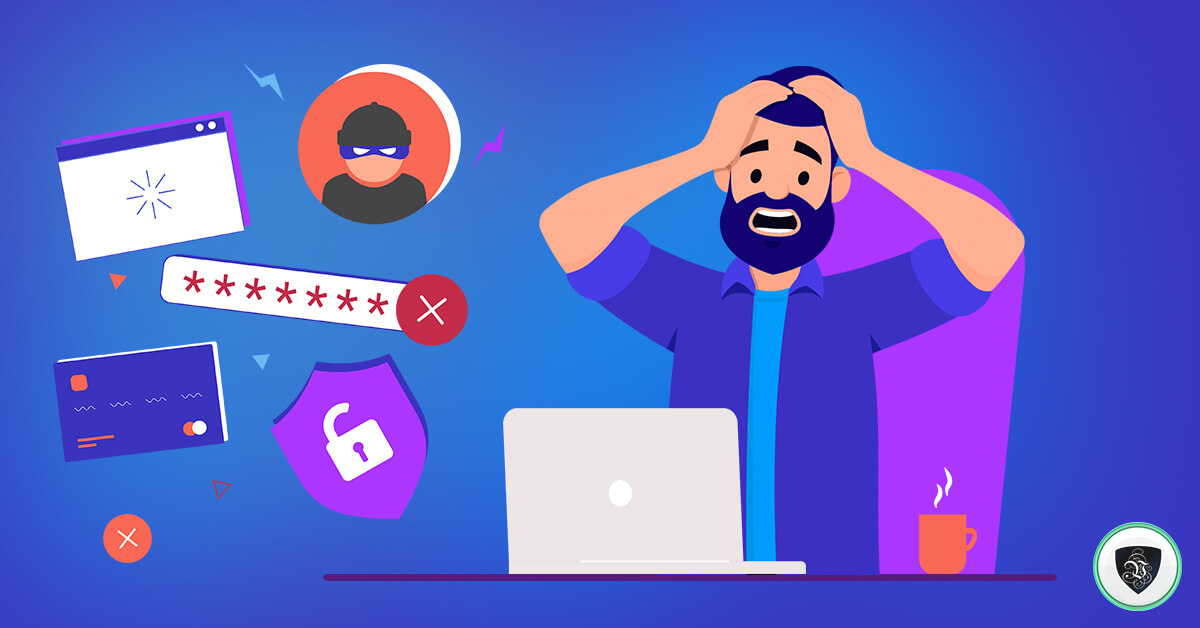Many people use social networks, showcasing their lives and adding personal data. Any social network user can become a victim of a scammer, who can steal:
- electronic copies of documents;
- photos;
- phone numbers.
They use them for various fraudulent schemes.
Fraud in Social Networks
The user may not immediately realize that their data has been stolen; it becomes apparent later when the scammer begins their manipulations.
By hacking a page, scammers use a scheme such as borrowing money from friends of the person whose account was hacked. They report a misfortune that happened to them and ask for financial help. Many believe these messages and transfer money. It turns out that this person did not ask for help, and their account was hacked and data stolen.
When hacking pages, scammers block them and send the user a message offering quick page unblocking for a considerable sum. In this situation, it is necessary to contact the cyber police with a statement about extortion.

Leak of Personal Data
A leak of personal data is considered to be access by a third party to confidential information without permission.
- Using personal data, scammers can:
- pay for online purchases;
- cash out amounts available to the victim;
- hack social network passwords;
- send various messages to friends and acquaintances on behalf of the victim.
How Data is Stolen Online
Data theft occurs through phishing messages and links that require users to enter their personal data. Scammers may offer a job online and send a phishing link to log in to an employment site. The victim enters data used in social networks, allowing the scammer to gain access to personal information.
Any link with a call to immediately follow it or respond to a message is sent by scammers to create greater surprise effect, sending links from a bank, police, or judicial organization, causing panic, and the person follows it to supposedly get information. Here they are required to enter personal data, thus giving the scammer access to the victim's personal data.
Social Networks and Financial Risks
All social network participants are at risk of becoming a scam victim and inadvertently participating in financial manipulations.
Scammers often send links about quick and easy earnings, requiring registration on a site by following the link provided in the message.

To keep social networks secure, it is necessary to:
- set up two-factor authentication protection to prevent scammers from hacking the page;
- secure your financial savings, deposits, bank cards, as the risk of losing money is very high;
- if a personal data leak occurs, contact the bank to block accounts and file a statement with the cyber police to prevent scammers from unlocking financial information.
Scams on Facebook and Instagram
Using social networks Instagram and Facebook, scammers carry out many different scams:
Romantic fraud - they send messages to social network users about searching for a partner, engage in conversation, propose a meeting, but to travel from another city or country, they need money for a ticket or visa. That's when scammers start demanding money to bring the meeting closer.
Investment fraud schemes – scammers send advertisements with links where you need to register and become an investor in a very attractive offer, promising high returns. In reality, the victim transfers money directly to the scammer.

How to Protect Personal Information
Do not follow links sent in emails, even if the letter came from a friend; do not forget that their accounts can also be hacked.
It's necessary to check websites where data entry is required to log into an account or messenger.
Setting up two-factor authentication for account activation involves additional verification using a code in an SMS message in addition to the existing login and password.
If an account is hacked, contact the cyber police and file a statement to resolve the issue.
Fake Scammer Accounts
Scammers create fake accounts to carry out one-time scams, such as organizing a charity fund to collect money for a good cause. They may present themselves as:
- employees of charity funds;
- workers of orphanages;
- parents of unfortunate disabled people;
- religious figures asking for donations.
After collecting as much money as possible, scammers delete fake accounts.

Scams in Messengers
By distributing information in messengers, scammers hope to attract a large number of victims. The scam involves the fact that all the provided information is fake. In the end, suspicious messages or emails from well-known companies arrive; do not rush to open links and attachments because this could be a scam aimed at stealing personal data and financial savings.
